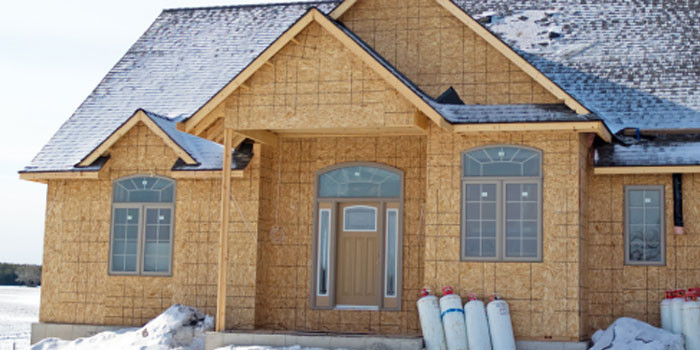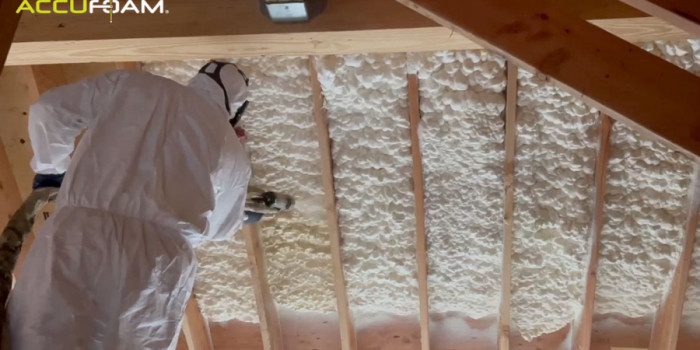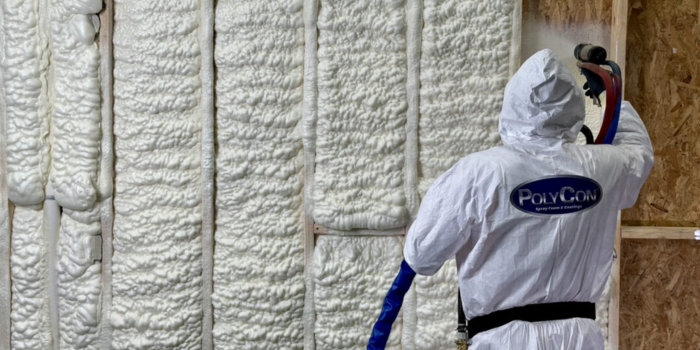Silence in Panic
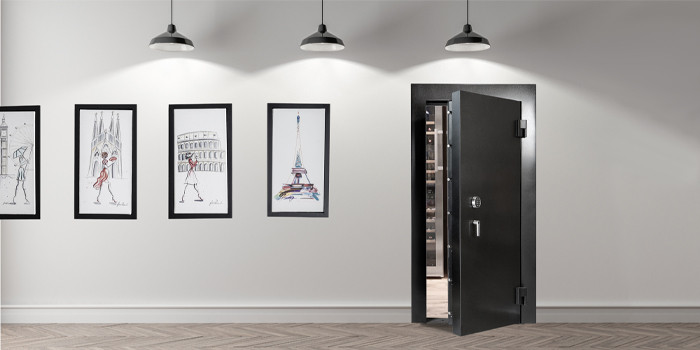

Spray Foam Magazine – Fall 2020 – Increasing violent attacks like home invasions or riots highlight the cruel reality of life in a dangerous world. The panic room is a secure and safe refuge from such dangers or other threats. The Spray Foam Magazine team discreetly investigated why spray foam insulation is a crucial material for safeguarding anyone who uses these rooms by speaking with Bill Rigdon, the ultimate expert in the global business of panic room construction.
Rigdon started his career building bunkers, and would often find himself advertising these bunkers by placing flyers on Mormon’s windshields. This was back in 1995 when many of the earnest Utah Mormons believed that “Blood Moon” on September 28, 1995 was going to be the end of the world. Technology started drastically changing in the 90s, going above grade, rather than below grade. The underground structures built for staying in during bad weather and the Cold War with its threat of atomic warfare, soon morphed into home protection.
These safe places, now known as panic rooms, had a slower start, but they have become extremely prevalent in today’s society. Bunkers of course may be useful, but what happens when an immediate threat strikes a person at home or in the workplace? There is no time to run to the bunker, so where do they hide?
Since the establishment of their father company in 1995, Building Consensus, Rigdon and his team have made it their mission to stay ahead of the needs of the ever-changing environment by offering to fulfill the potential concerns of their clients. Building Consensus is also recognized for providing expert knowledge and cutting-edge safe/panic rooms through their additional company PanicRoomBuilders.com.
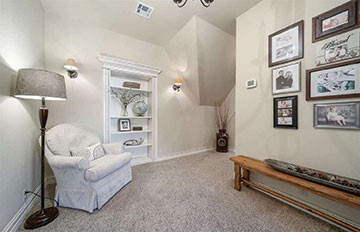
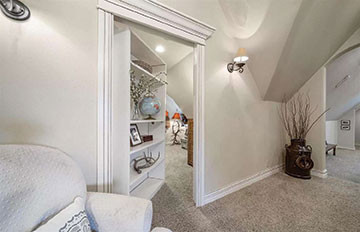
The safety and privacy of their clients is paramount as their Director of International Business Dean Cryer explains, “There isn’t any project that we haven’t had to sign NDAs for. These are high profile and very private people we deal with. In many cases, we do our work when no one is on site and have it concealed immediately (cover with drywall, stone, etc.) upon our installation.” The Panic Room Builders even consulted on Fincher’s 2002 hit movie Panic Room, starring Jodie Foster, with their knowledge in panic room structures and security being instrumental to the film’s director and crew.
The birth of Dupont’s1 Kevlar, a lighter weight material used in many applications including bulletproof vests, soon developed into sheets of bulletproofing. “Sheets of drywall are layered with Kevlar; you can basically screw it onto a wall. What is interesting about that is that it also added sheer value and when you spray the foam insulation behind it, the rating goes way up and becomes even more protected,” explains Rigdon.
For thousands of years, humans have built secret rooms to either hide treasure, protect high profile people and even material possessions. From the ancient Egyptians protecting their entombed Pharaoh’s treasures to the 60s where bunkers became popular in response to the high possibility of nuclear attacks, panic rooms have developed in structure and prominence.
Rigdon describes the threat of a home invasion and how these special rooms can protect people, “A lot of our panic rooms are hidden so no one knows where they are, except the owners of the property. The owner will usually have a keypad, a fingerprint or an eye scan to let them enter the room. The space has to be kept quiet, nobody should know where this panic room is in the structure, so we started using spray foam to protect that person even more in that cell proof room.”
Spray foam has a great reputation for reducing external and internal noises. Expanding and filling in all gaps, it creates a protective guard that complements the bulletproof Kevlar material, helping absorb any echo and therefore reducing the sound and thus keeping the occupant safe.
Open-cell sprayed-foam formulations are lower density and often less costly per board foot than the closed-cell counterpart. Open-cell is great for sound-deadening, with high expansion properties to quickly and simply fill voids, making it perfect for soundproofing these panic rooms. It’s flexible and lightweight but still adds structural support. By spraying open-cell foam the crew will successfully pack the airspace typically found in these areas, resulting in the transmission of sounds being obstructed and significantly reduced. The airborne sounds, in most cases people talking or moving around in the room, and structural vibrations, which result in a larger sound will become dampened and therefore considerably reduce the risk for any intruder finding the room.
Rigdon goes on to explain, “The foam also helps insulate the room from any air leakage in the space either inside or outside. These rooms need to be kept on a separate ventilation system which is not connected to the rest of the structure but linking the panic room to the exterior of the building. We have several air ducts that are camouflaged and mainly dummy ones, we even put them in the landscaping, so nobody can tell where the vent is actually coming out. Spray foam really adds to the security of the room.”
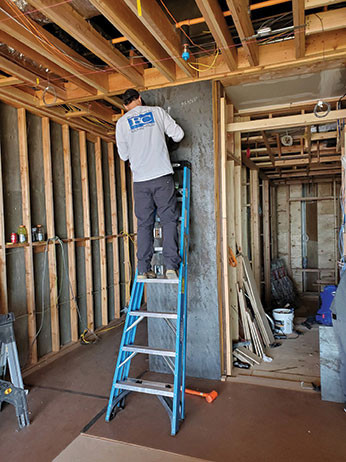
Spray foam can expand to fill all gaps, creating a protective guard that complements the bulletproof Kevlar material, helping to absorb any echo and reduce sound in order to keep the occupants in a panic room safe.
Photo provided by BUILDING CONSENSUS / PANIC ROOM BUILDERSPanic Room Builders build many of these rooms for high net worth people, for example celebrities who have received threats or experienced stalking problems. Rigdon explains that the last place you want to go is in the panic room, “There are other barriers of defense within the building and if those barriers are breached, they need to get into the panic room. This room is completely isolated from the rest of the structure, not only for sound dampening and insulation but to essentially seal off that room from intruders. When these rooms are put together there are slight gaps, you can’t get a bullet through, but there is an air passage, so you have to seal it up properly and that’s where spray foam is great.”
The Panic Room Builders structures can be in any room of a house or business, and typically it’s a space that the occupant can get too quickly. When spray foam is correctly installed, there are no air gaps and it fills voids better. Rigdon points out, “It’s important to make sure the stud bays and the concrete is clean and free of dust and debris and thoroughly dry. We use standard building practices and because the materials are weighty, we use an engineer to approve the loads prior to installation.”
The crew subcontract spray foam insulation out to a certified applicator and for safety reasons we will not disclose their names. The crew are reliant upon these professionals to provide the best type of equipment for that particular project and have used multiple types and brands of foam that vary with the type of materials they use. Just as each of their ballistic materials has different makeup (e.g. Kevlar levels 1-8, armor plate AR 400-500, etc.), the type of spray foam insulation would be determined to best complement the application and/or add another element requested (thermal heat barrier, etc.) by the client. The thickness varies with the build and what they are trying to accomplish for that specific panic room.
These rooms have a standard wood stud and steel framing, rafters and joists and a mix of poured in place concrete with wood or steel studs over concrete. Rigdon also points out, “The voids and stud bays work well for filling with spray foam prior to us sealing them up with Kevlar or armor plate. The spray foam area applied also depends on if it’s a new build construction or retrofit, with the foam being applied to the walls, ceiling and floor on a new build and just the walls on a retrofit.”
The Panic Room Building crew heavily invest in planning and details about 55 percent of their schedule, including shop drawings for each and every area to be protected, while the fabrication is 20 percent of the schedule duration and installation is 25 percent.
“We have well-trained teams that can basically read each other’s minds having worked together for many, many years. Of course, each job is unique in size and scope and those would be the driving factors for which team we use. Generally, we have two teams of six for installations and it is important to know that our installers are also the fabricators,” clarifies Cryer.
The occupant of the panic room can even choose if they want access to drones which can take off and be monitored from their panic room. The person can see who is on the property and they can even drop a net to immobilize the intruder or drop pepper balls on them. A basic drone is cheap these days with intruders scoping out a particular property before they invade, so Panic Room Builders have killer drones that will take those down if they are over their client’s property. “We also put radios in the panic rooms as the cell phones could lose signal and the landline could go out. These radios have a frequency that goes through to the fire department and the police department,” explains Rigdon.
These perfected panic rooms range in price with the most expensive room the crew has ever fitted costing a mere $1 million and situated in central London in the UK. The average according to Rigdon, is $100k and they go up from that price point. “Ask yourself this, ‘What is your life worth? Wouldn’t you spend it on your safety not just material processions,” says Rigdon.
There was once a stigma attached to these rooms with many seeing them as for the wealthy or paranoid, but those views are drastically changing. After September 11th and then natural disasters like Hurricane Katrina, the panic room soared in popularity. The recent pandemic along with a divide in society, has increased the demand even further.
Panic rooms are frequently the key dynamic between life and death, so consequently the Panic Room Builders take their work very seriously; working closely with a world-class team of former FBI crisis-management specialists, architects, engineers and construction professionals including spray foam installers. A panic/safe room is a haven, a place where individuals, families or executives can protect themselves from violence while the authorities answer a call for help. Spray foam installation helps in these efforts by adding an extra layer of protection through sound dampening, insulation and sealing off the panic room to any intruder.
Rigdon is generally concerned for peoples safety in this current climate and appreciates not everyone has access to funds to build a panic room immediately, “It is so important to even have a room in your house, a safe zone that you can hide in and emergency supplies in there, like canned food, water and medical supplies.”
The world is in a current state of crisis and what was once thought of as an extreme view of doomsday preachers, “The-end-of-the-world” type of scenario, seems a large step closer. Apprehension and confusion are fueling fear and metamorphizing into hate and it’s this animosity that has helped cause rioting, political infighting and general violence. The use of a panic room is no longer considered a far-fetched idea but more of a necessity and with the use of materials like spray foam, those safe rooms may just save our lives.
1 Kevlar is a heat-resistant and strong synthetic fiber, related to other aramids such as Nomex and Technora. Developed by Stephanie Kwolek at DuPont in 1965, this high-strength material was used first commercially in the early 1970s as a replacement for steel in racing tires.
Disqus website name not provided.





